Your National Library

Established in 1901 as part of the Commonwealth Parliamentary Library, the Library started life in the Victorian Parliament House, Melbourne. The name ‘Commonwealth National Library’ was adopted in 1923 and, four years later, the staff of 12 moved to Provisional Parliament House (now Old Parliament House) in Canberra. In 1934 a smaller building (since demolished) opened on Kings Avenue. The National Library Act 1960 established the Library as an independent institution, separating it from the Commonwealth Parliamentary Library. The current building, which opened on 15 August 1968, allowed for a greater array of services to readers and visitors and for better storage capacity for the collection.
Mabo
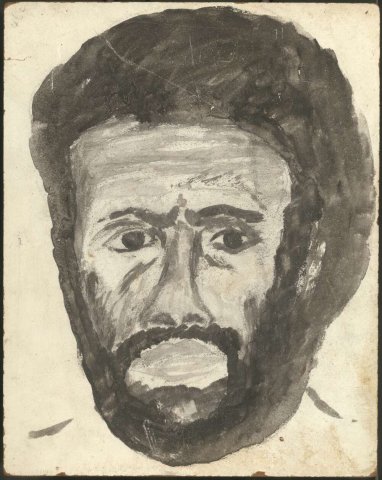
The Mabo v Queensland (No. 2) decision was handed down in the High Court of Australia on 3 June 1992. ‘Mabo’—as it has come to be known—altered the foundation of land law in Australia. It provided official recognition of the inherent rights of Indigenous Australians to their traditional lands.
The National Library of Australia holds an extensive collection of material relating to the Mabo decision and to its lead applicant, Eddie Koiki Mabo. To celebrate the 30th anniversary of the Mabo decision, the National Library invited Gail Mabo, Eddie’s daughter, to select material for display to mark this landmark moment in Australian legal history.
Gay Law Reform
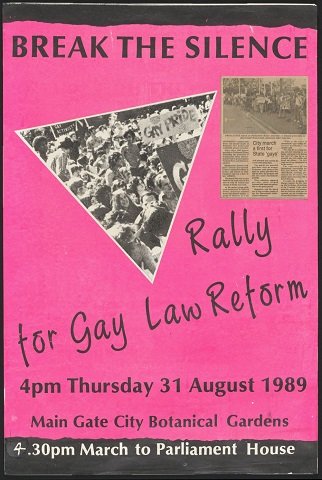
In 1988, Ted Kelk and Pat O’hara founded the Queensland Association for Gay Law Reform (QAGLR). With the recent election of the Wayne Goss Labour government in Queensland, ending 32 years of conservative government rule, progressive groups such as QAGLR had the opportunity to petition a more receptive government to end laws criminalising homosexuality. After a concerted lobbying and submission effort, the Queensland government passed The Criminal Code and Another Act Amendment Act, 1990, decriminalising sex between consenting men.
Celebrated Artist
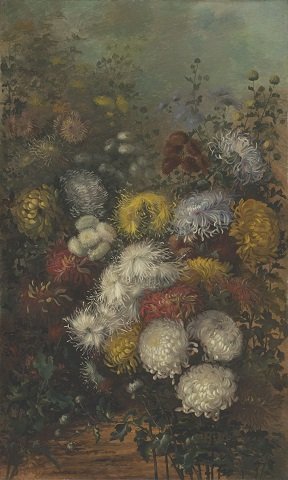
Australian artist Ellis Rowan primarily worked in watercolour and gouache, and is best known for painting Australian native flowers. She caused a stir at the 1888–89 Centennial International Exhibition in Melbourne when her painting Chrysanthemums won First Order of Merit and Gold Medal. This similar painting, depicting the same type of flower, is a more recent addition to the Library’s vast Rowan Collection, the bulk of which was acquired for the nation for £5,000 in 1923.
Bennelong's Letter
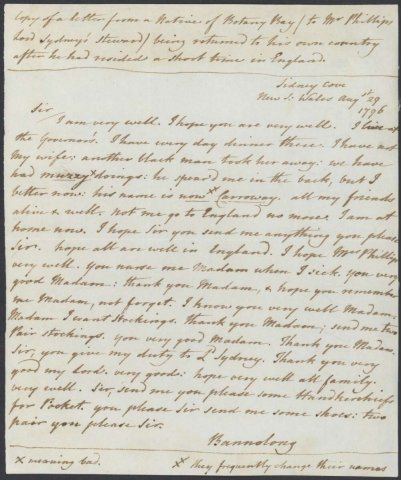
This document records the earliest known piece of writing by an Indigenous Australian. The manuscript is the only contemporary copy of a dictated letter which appears to have been copied verbatim by an unknown scribe. The author, Bennelong, a leader of the Wangal people, and his young kinsman, Yemmerrawanne, became the first Indigenous Australians to travel to England in December 1792. During the trip, they both fell ill. Sadly, Yemmerrawanne died and Bennelong returned home alone in 1795. In this letter to Mr and Mrs Phillips Bennelong profusely thanks them for looking after him.
The Bard of the Bush
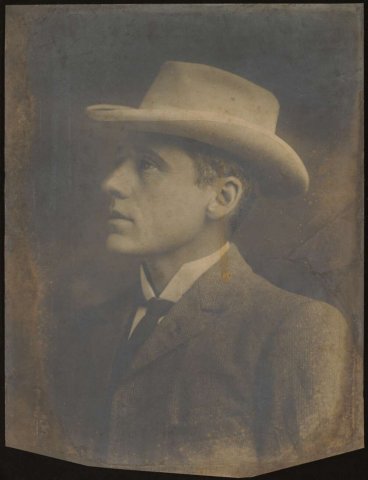
Andrew Barton ‘Banjo’ Paterson is arguably Australia’s most celebrated poet. White settler culture and the bush were his subjects, the bushman his hero. A practising solicitor, Paterson began publishing poems in the popular journal The Bulletin under the pseudonym ‘The Banjo’, taken from a racehorse owned by his family. The popularity of his works led to the publication of his first collection of poems, The Man from Snowy River and Other Verses in 1895. Featuring in the Gallery is a display on Paterson and his contemporary Henry Lawson.
Kaaroo
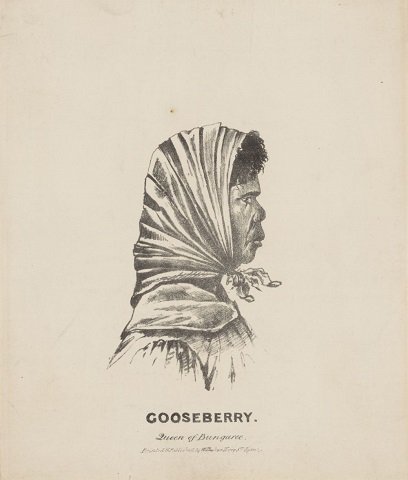
Kaaroo (c. 1777–1852), known to Europeans as Cora Gooseberry, was a significant Murro-ore-dial knowledge-keeper, daughter of the prominent leader Moorooboora, and the principal wife of Bungaree. For more than two decades after Bungaree’s death, Kaaroo maintained a place in the local consciousness of Sydney, attending levees at Government House, and sharing her knowledge of petroglyphs (rock carvings or paintings) at North Head.
The Schevenhuysen Map
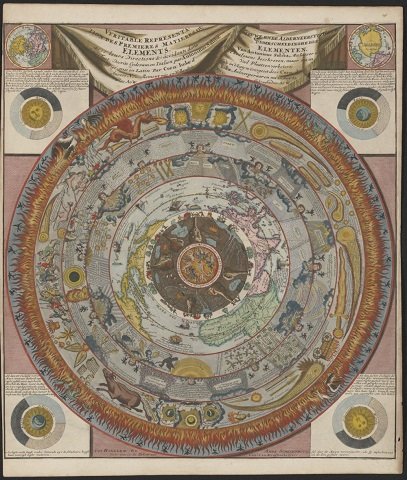
This cosmographical map, dating from the end of the 'Dutch Golden Age', was acquired by the Library in 2022. The map's layout brings together different mapping and philosophical traditions of important past mapmakers: there are eight concentric rings, with Hell (Inferno) at the centre and the heavens on the periphery. The depiction of the Asia-Pacific region in the terrestrial zone reflects European knowledge as it stood before the mapping of the early-sixteenth-century Dutch explorers. Accordingly, Australia does not explicitly appear, except for a passing reference to 'Terra Australis nondum planedetecta' (Southern land not yet fully known) in the map’s upper righthand corner.
Family Life in Colonial Australia
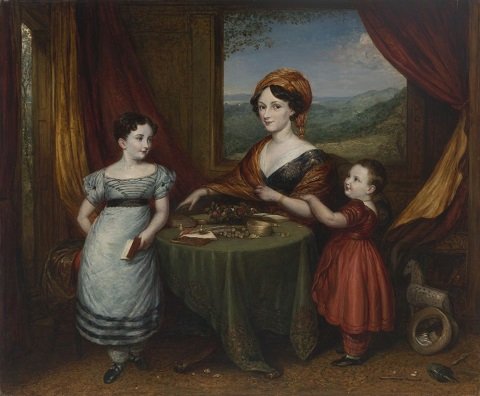
Shortly before their departure for Australia, the incoming governor of New South Wales, Ralph Darling, his wife, Eliza (1798–1868), and two of their children posed for the artist John Linnell. Linnell completed two husband-and-wife portraits, and this one of Eliza and the children. It offers a window into Georgian Britain, showing a dutiful and genteel mother with a daughter on the left holding a book and a younger son on the right reaching out to his mother. Eliza Darling made a significant contribution to the colony, supporting causes such as education for girls and female convicts.
Harold Cazneaux’s First Camera
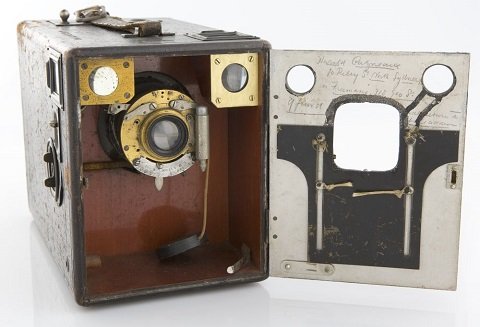
Harold Cazneaux (1878–1953) was perhaps Australia’s best-known photographer of the early twentieth century. He purchased this camera in 1904, shortly after moving from Adelaide to Sydney, and made photographs of Sydney’s streets and waterways. In 1909 he became the first Australian photographer to exhibit his works in a solo show. Cazneaux was a master of the pictorialist style of photography, using soft focus to capture scenes that were – and remain – familiar to many Australians in a new light. He was able to find a timeless, extraordinary beauty in the everyday.
Australian Suffragist

Ellen ‘Nellie’ Martel (1855–1916) was a council member of both the Women’s Progressive Association of New South Wales and the Womanhood Suffrage League of New South Wales. She managed the League’s petitions, one of which brought the question of women’s suffrage to the Australasian Federal Convention in 1897–98. The petition pointed out the inconsistency of allowing women in South Australia to vote, as they had been allowed to do since 1894, while preventing women of the other colonies from doing so.
Soldier Settlement
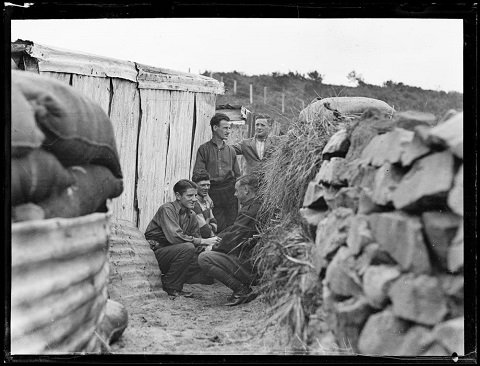
Both during and after the First World War, hundreds of thousands of Australian servicemen were repatriated to Australia. State and federal governments enacted a scheme to provide around 37,500 returned servicemen with land and agricultural training. However, the allotments of land were too small, with poor soil quality, and expert advice was lacking. As a result, by 1929 nearly 11,000 soldier-settlers had abandoned, forfeited or transferred their allotments. The scheme has largely been considered a failure.